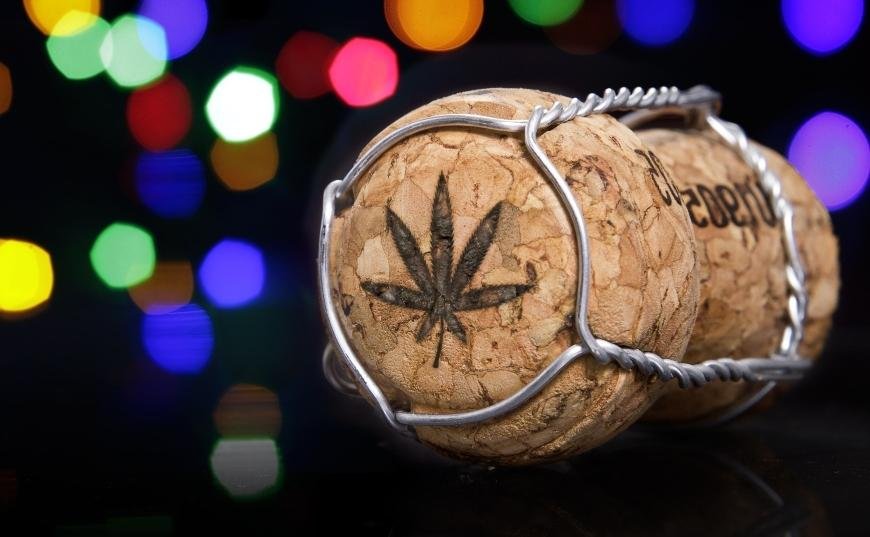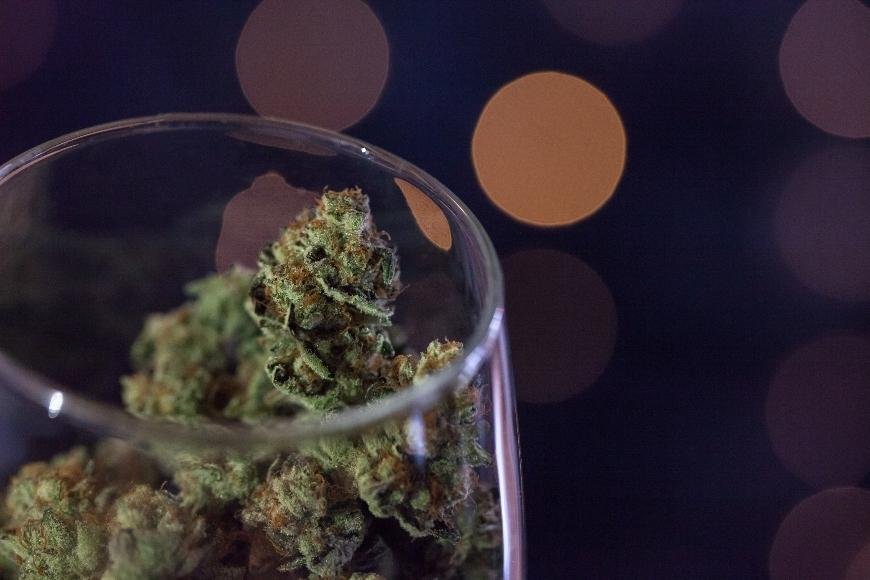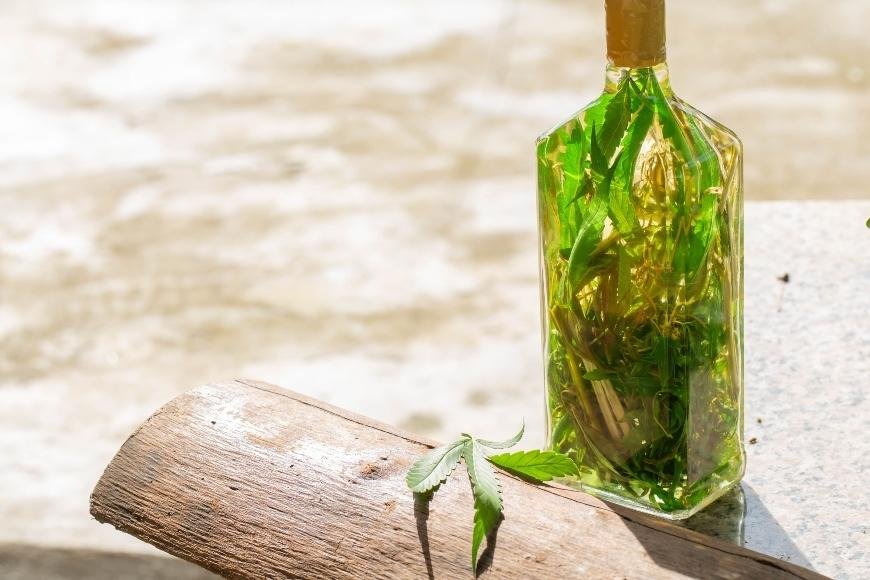How to Make Cannabis-Infused Wine
Discover how to make cannabis-infused wine with our step-by-step guide, perfect for young adults seeking a unique and enjoyable marijuana experience.

Curious about how to make cannabis-infused wine? You've come to the right place! In this blog post, we will guide you through the process of creating your very own marijuana-infused wine. This unique concoction combines two favorites for an unforgettable experience.
We'll start by discussing the necessary ingredients and equipment required for making cannabis wine. Next, we'll delve into decarboxylating your cannabis - a crucial step in unlocking its full potential. After decarboxylation, it's time to infuse the wine with the cannabis for maximum potency.
But that's not all! We'll also discuss monitoring temperature during infusion to ensure optimal results. Finally, learn how to store your infused wine properly so you can enjoy it at its best whenever you please. Are you ready to begin exploring the thrilling realm of cannabis-infused vino? Let's get started!
Table of Contents:
- Gather the Necessary Ingredients and Equipment
- Decarboxylate Cannabis
- How to Store Cannabis-Infused Wine
- FAQs in Relation to How to Make Cannabis-Infused Wine
- Conclusion
Gather the Necessary Ingredients and Equipment
Before embarking on the exciting journey of making your own cannabis-infused wine, it's essential to gather all the necessary ingredients and equipment. This will ensure a smooth process from start to finish, resulting in a delicious and potent final product.
To make cannabis-infused wine at home, you'll need:
- Cannabis flowers or concentrates: Choose high-quality buds or concentrates with your desired THC/CBD levels for optimal effects. You can find various strains at reputable dispensaries or grow them yourself if legally allowed.
- Wine: Select a bottle of your favorite red or white wine as the base for infusion. Keep in mind that robust flavors may help mask any lingering cannabis taste.
- A slow cooker or stove: Both options work well for infusing cannabis into wine; choose whichever method is most convenient for you.
- A grinder: A good quality grinder will ensure even decarboxylation and efficient extraction of cannabinoids during infusion.
- A strainer: Use cheesecloth, coffee filters, or fine mesh strainers to separate plant material from infused liquid after cooking.
- A glass container: Store finished infused wine in an airtight glass container away from light exposure to preserve potency and flavor over time.
Besides these primary items, also consider having some additional tools handy such as oven mitts (for handling hot containers), measuring cups/spoons (to accurately measure ingredients), stirring utensils, and a funnel (for easy pouring).
Once all the components are ready, it's time to decarboxylate your cannabis in order to activate its psychoactive properties and maximize CBD effects in the finished wine. This crucial process activates the psychoactive properties of THC and enhances CBD effects in your infused wine.

Decarboxylate Cannabis
Before beginning the infusion process, it is essential to comprehend why decarboxylating cannabis is a significant step. Decarboxylation is a necessary step that activates the psychoactive properties of THC and other cannabinoids in your cannabis flowers or concentrates. Heating cannabis at a certain temperature for an allotted time can convert THCA into its active form, THC.
To begin decarboxylating your cannabis, you'll need an oven and some parchment paper. Once the oven is preheated to 240°F (115°C), begin preparing your cannabis for decarboxylation. While waiting for the oven to heat up, use a grinder to break down your chosen amount of dried cannabis flowers into smaller pieces - but not too fine as this can make straining more difficult later on. Spread these ground-up bits evenly onto parchment paper placed on an oven-safe tray.
- Bake the ground cannabis in a preheated oven for 30-45 minutes, keeping an eye on it to avoid burning and ensure that the color changes from greenish hues towards brownish shades.
- The color should change from greenish hues towards brownish shades when properly decarbed; this indicates that THCA has been converted into THC effectively.
- Once done baking, remove from the oven and let cool before proceeding with infusing wine.
If using concentrates like hash or kief instead of flower material during the decarb process:
- Carefully spread out the concentrate over a parchment paper-lined tray without clumping together any areas excessively - even distribution helps ensure thorough activation across the entire batch.
- Oven time may vary depending upon the specific type/consistency involved; generally speaking though, aim for around 20-30 minutes at the same temperature setting mentioned earlier (240°F / 115°C).
Decarboxylation is a crucial step in making cannabis-infused wine, as it ensures that you'll experience the desired psychoactive effects when consuming your homemade concoction. By following these simple steps and paying close attention to time and temperature, you can successfully decarboxylate your cannabis and prepare it for infusion with wine.
How to Make Cannabis-Infused Wine
If you're looking for a unique and enjoyable way to consume cannabis, why not try making cannabis-infused wine? This process combines the flavors of your favorite wine with the psychoactive properties of cannabis, resulting in a one-of-a-kind beverage. Here's how to make it:
- Decarboxylate Your Cannabis: Before infusing your cannabis with wine, you need to decarboxylate it. This process involves heating your cannabis to activate its psychoactive compounds. Preheat your oven to 240°F/115°C and spread your cannabis on a baking sheet. Bake for 30-40 minutes, stirring occasionally, until it turns light brown and crumbly.
- Combine Ingredients: Once your cannabis is decarboxylated, add it to a large glass container or jar. Pour in one bottle of your chosen wine over the ground cannabis, making sure all plant material is submerged in liquid.
- Mix Well: Gently stir the mixture using a long spoon or spatula to ensure even distribution of cannabinoids throughout the wine.
- Cooking Options: You have two options when it comes to cooking - using a slow cooker or simmering on low heat on your stove.
- Slow Cooker Method: For a slow cooker, transfer the mixture into it and set to low heat (around 160°F/71°C) for four hours while leaving some space uncovered for air circulation. Remember not to cover completely; leave some space for air circulation.
- Stove-Top Method: If you prefer simmering on stovetop, use an uncovered double boiler filled halfway with water as an alternative method if available - this helps maintain consistent temperature control while preventing direct contact between the large pot bottom and heating element which could cause overheating issues. Maintain a temperature between 160°F/71°C and 180°F/82°C while stirring periodically to ensure even distribution of cannabinoids.
Throughout the cooking process, it's crucial to occasionally stir your cannabis-infused wine mixture. This ensures even distribution of cannabinoids and prevents any plant material from sticking to the bottom or sides of your container. Remember that patience is key during this step - rushing through it could result in a less potent final product.
Once your cannabis-infused wine is ready, strain it through a cheesecloth or fine mesh strainer to remove any remaining plant material. You can also add a tea bag to the mixture to enhance the flavor and aroma of your cannabis wine.
It's important to note that cannabis-infused wine can have a higher alcohol content than traditional wine, so consume it responsibly. And as with all marijuana products, start with a small amount and wait to see how it affects you before consuming more.
Enjoy your homemade weed wine with friends or as a relaxing nightcap. Cheers.
Monitor Temperature
To ensure the potency of cannabinoids like THC and CBD, monitoring and maintaining a suitable temperature during the infusion process is essential. Proper temperature control ensures that you preserve the potency of cannabinoids like THC and CBD while avoiding overheating, which can lead to a loss in their effectiveness. To help you keep an eye on this vital factor, consider investing in a digital instant-read thermometer.
Temperature should be kept consistent, between 71°C and 93°C, in order to ensure successful extraction of cannabinoids without their deterioration or vaporization from too much heat. This range allows for effective extraction of cannabinoids without causing them to degrade or evaporate due to excessive heat.
If you're using a slow cooker for your cannabis-infused wine, set it on low heat and monitor its internal temperature regularly with your digital thermometer. Slow cookers are known for providing steady temperatures over extended periods; however, each model may vary slightly in terms of heating consistency.
If you're simmering your mixture on a stovetop instead, use a double boiler setup - place one pot containing water atop another pot filled with your wine-cannabis blend. This method helps prevent direct contact between the flame or heating element and your concoction, ensuring even distribution of heat without scorching or burning any precious cannabinoids.
Apart from keeping track of temperatures during cooking time (usually around three hours), make sure not to cover either vessel entirely when infusing - leaving some space will allow steam to escape and prevent pressure buildup. Additionally, stir the mixture occasionally to ensure even extraction of cannabinoids throughout your wine.
By closely monitoring temperature during the infusion process, you'll be well on your way to creating a potent and delicious cannabis-infused wine that retains all its desired psychoactive properties.

How to Store Cannabis-Infused Wine
If you've successfully made cannabis infused wine, it's important to store it properly to preserve its potency and flavor. Here are some tips to help you store your homemade creation:
First, pour your infused wine into a clean glass container with an airtight seal, such as a bottle or jar. This will prevent contaminants from entering and limit oxygen exposure, which can degrade cannabinoids over time.
It's best to use tinted glass containers that block UV light, such as amber or cobalt blue bottles, to protect your infusion from sunlight exposure. Store your infused wine in a cool, dark place away from direct sunlight or temperature fluctuations, ideally between 50-60°F (10-15°C).
Maintain humidity levels around 50-70% to prevent mold growth on corks if using traditional cork-sealed bottles. Keep vibrations at bay by placing containers on sturdy shelves or racks to avoid disturbing sediments formed during infusion, which could impact overall taste quality when consumed later on.
When it's time to enjoy your cannabis-infused wine, remember to start with a small serving size and wait for the effects before consuming more. The combination of alcohol and THC can create a unique and potent experience, so moderation is key. Keep in mind that cannabis wine may have a shorter shelf life than traditional wines due to its infusion process - aim to consume within six months for best results.
Lastly, be aware of local laws and regulations regarding the production and consumption of cannabis-infused beverages in your area. Stay informed, responsible, and enjoy your homemade infused wine responsibly.
FAQs in Relation to How to Make Cannabis-Infused Wine
What is the ideal ratio of cannabis to wine for infusion?
The ideal ratio of cannabis to wine depends on personal preference and desired potency. A common recommendation is 1 gram of decarboxylated cannabis per bottle (750ml) of wine. This can be adjusted according to individual taste and tolerance levels.
Can you infuse other types of alcohol with cannabis?
Yes, you can infuse various types of alcohol with cannabis, such as vodka, rum, or whiskey. The process is similar to making infused wine but may require different infusion times and temperatures depending on the type of alcohol.
How long does it take for the effects of cannabis-infused wine to kick in?
The onset time for the effects from consuming a cannabis-infused beverage, like infused wine, varies between individuals but typically ranges from 30 minutes up to two hours after consumption. Factors influencing this include metabolism rate, body weight, and tolerance level.
Is there any difference in effect between smoking marijuana and drinking infused wines?
There are differences in how your body processes smoked versus ingested cannabinoids like THC. Smoking provides faster onset times (within minutes), while edibles or beverages have a slower absorption rate (30 minutes to 2 hours). The effects of ingested cannabis tend to last longer and may be more potent due to the liver metabolizing THC into a stronger compound.
Conclusion
In conclusion, making cannabis-infused wine is a fun and creative way to enjoy the benefits of both cannabis and wine. To get started, gather the necessary ingredients and equipment, decarboxylate the cannabis, infuse it with wine, monitor the temperature, and store it properly. By following these steps with patience and attention to detail, you can create your own delicious blend of infused wine.
Experimenting with different strains of cannabis and types of canna wine can lead to unique flavor combinations that are sure to impress your friends at your next party or gathering. So why not give it a try? With some patience and attention to detail, you'll be sipping on your very own homemade cannabis-infused wine in no time!






































































































































